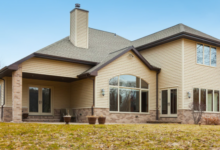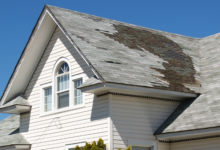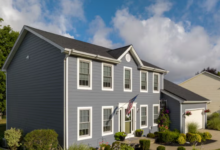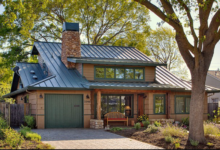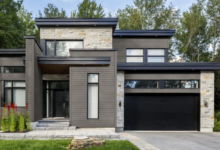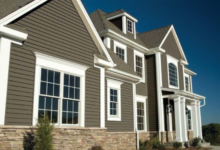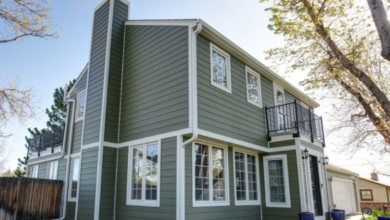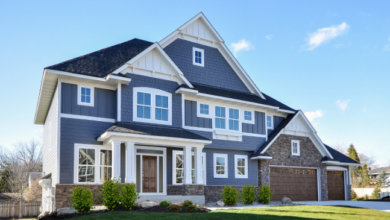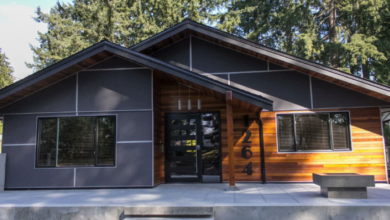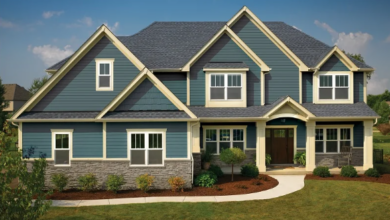Compare Home Siding Materials: Find the Perfect Fit for Home
Compare Home Siding Materials – Explore the pros, cons, costs, and best use cases of various home siding materials. Make an informed decision with our detailed guide and discover where to purchase top-quality siding products.
Comprehensive Comparison of Home Siding Materials: Find the Perfect Fit for Your Home
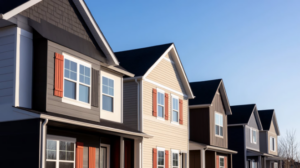
Choosing the right siding for your home is a crucial decision that impacts not only the aesthetic appeal but also the durability, maintenance, and overall value of your property. With a plethora of options available, it’s essential to understand the characteristics, benefits, and drawbacks of each material to make an informed choice.
In this guide, we’ll delve into the most popular home siding materials, provide real-world product examples, and offer insights into their applications, costs, and purchasing options.
Popular Home Siding Materials
1. Vinyl Siding
Vinyl siding is a widely favored choice among homeowners due to its affordability and low maintenance requirements. Made from polyvinyl chloride (PVC), it offers a variety of colors and styles, including options that mimic the appearance of wood.
Pros:
- Cost-Effective: Vinyl is one of the most budget-friendly siding materials.
- Low Maintenance: Requires minimal upkeep; occasional cleaning suffices.
- Versatility: Available in numerous colors and textures.
Cons:
- Durability Concerns: Susceptible to cracking in extreme temperatures.
- Appearance: May not provide the high-end look of natural materials.
Price Range: Approximately $1.50 to $5.00 per square foot installed.
Real-World Example: Norandex Vinyl Siding
2. Fiber Cement Siding
Fiber cement siding, composed of cement, sand, and cellulose fibers, is renowned for its durability and resemblance to natural wood. It’s resistant to various environmental factors, making it a robust choice for many homeowners.
Pros:
- Durability: Withstands harsh weather conditions and is fire-resistant.
- Aesthetic Appeal: Mimics the look of wood without the associated maintenance.
- Longevity: Can last up to 50 years with proper care.
Cons:
- Installation Costs: Heavier material requires professional installation, increasing labor costs.
- Maintenance: While durable, it may need periodic painting to maintain its appearance.
Price Range: Approximately $5.00 to $14.00 per square foot installed.
Real-World Example: James Hardie Fiber Cement Siding
3. Wood Siding
Wood siding offers a classic and timeless appeal, available in various styles such as clapboard, shingles, and shakes. Common wood types include cedar, pine, and redwood.
Pros:
- Aesthetic Versatility: Can be painted or stained in numerous colors.
- Natural Insulation: Provides better insulation compared to some synthetic materials.
- Eco-Friendly: Renewable resource with a lower environmental footprint.
Cons:
- Maintenance-Intensive: Requires regular painting or staining and is susceptible to rot and insect damage.
- Cost: Higher initial investment and upkeep costs.
Price Range: Varies by type; cedar lap siding ranges from $5.00 to $10.00 per square foot installed.
Real-World Example: Cedar Lap Siding
4. Metal Siding
Metal siding, typically made from aluminum or steel, is known for its durability and modern appearance. It’s especially popular in contemporary and industrial-style homes.
Pros:
- Durability: Resistant to fire, rot, and insect damage.
- Low Maintenance: Does not warp or crack and requires minimal upkeep.
- Eco-Friendly: Often made from recycled materials and is fully recyclable.
Cons:
- Cost: Generally more expensive than vinyl and wood.
- Dent Susceptibility: Can be dented by heavy impacts.
- Limited Insulation: Metal alone doesn’t provide significant insulation.
Price Range: Varies based on material and style; consult local suppliers for specific pricing.
Real-World Example: Quality Edge Steel Siding
5. Brick Siding
Brick siding offers a timeless and sturdy appearance, known for its longevity and minimal maintenance requirements.
Pros:
- Durability: Can last over a century with proper care.
- Low Maintenance: Resistant to weather and fire, requiring minimal upkeep.
- Energy Efficiency: Provides good insulation, helping to regulate indoor temperatures.
Cons:
- Cost: High initial investment due to material and labor costs.
- Limited Color Options: Traditional brick offers fewer color variations.
- Installation: Labor-intensive installation process.
Price Range: Higher end of the spectrum; specific costs vary based on region and brick type.
Real-World Example: General Shale Brick Siding
Comparison Table of Siding Materials
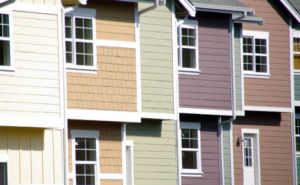
| Material | Durability | Maintenance | Cost per Sq Ft Installed | Aesthetic Appeal | Insulation | Eco-Friendliness |
|---|---|---|---|---|---|---|
| Vinyl | Moderate | Low | $1.50 – $5.00 | Versatile | Low | Moderate |
| Fiber Cement | High | Moderate | $5.00 – $14.00 | Wood-like | Moderate | High |
| Wood | Moderate | High | $5.00 – $10.00 | Classic | High | High |
| Metal | High | Low | Varies | Modern | Low | High |
| Brick | Very High | Low | High | Timeless | High | High |
Benefits of Choosing the Right Siding Material
Where to Purchase Siding Materials
When it comes to purchasing siding materials, consider the following reputable suppliers:
- Home Depot: Offers a wide range of siding options, including vinyl, wood, and fiber cement. Explore Siding at Home Depot
- Menards: Provides various siding materials suitable for different budgets and preferences. Shop Siding at Menards
- Lowe’s: Features a selection of siding products and accessories.
How to Buy the Best Siding for Your Home
- Determine Your Budget: Siding materials vary significantly in cost, so establish a budget before starting your search.
- Consider Climate Conditions: Some materials perform better in specific climates—fiber cement resists humidity, while brick excels in colder regions.
- Compare Durability and Maintenance: Choose a material that aligns with your ability to maintain it over time.
- Request Samples: Many suppliers provide free samples so you can assess the texture and color before making a final decision.
- Hire a Professional or DIY: Some siding options, like vinyl, are DIY-friendly, while materials like brick and fiber cement require professional installation.
- Purchase Online or In-Store: You can buy siding from major retailers like Home Depot, Lowe’s, or Menards. Check availability, compare prices, and order directly online.
Use Cases: Which Siding Material is Best for You?
Different siding materials cater to varying needs based on climate, aesthetics, and maintenance preferences:
- Budget-Conscious Homeowners: Vinyl siding is an excellent choice for those looking for a cost-effective, low-maintenance option.
- Classic & Rustic Appeal: Wood siding provides a traditional look, perfect for homeowners who want a natural, warm aesthetic.
- Severe Weather Resistance: Fiber cement siding is a durable choice for regions prone to hurricanes, heavy rain, or extreme temperatures.
- Modern & Industrial Homes: Metal siding is ideal for contemporary-style houses looking for a sleek, minimalist look.
- Luxury & Longevity: Brick siding is a premium option for homeowners who want a highly durable, timeless facade with minimal upkeep.
FAQs About Home Siding Materials
1. What is the most durable siding material?
Brick and fiber cement are the most durable, lasting 50+ years with minimal maintenance.
2. What is the most affordable siding option?
Vinyl siding is the most cost-effective, with prices as low as $1.50 per square foot installed.
3. Can I install siding myself?
Yes, some materials like vinyl and engineered wood are DIY-friendly, but fiber cement and brick require professional installation.
4. Which siding is best for extreme weather conditions?
Fiber cement and metal siding offer superior resistance to extreme weather, including hurricanes and wildfires.
5. Where can I buy quality siding materials?
You can purchase siding from major retailers like Home Depot, Lowe’s, and Menards.
Final Thoughts
Choosing the right home siding material is a significant investment that enhances your home’s curb appeal, durability, and energy efficiency. Whether you prioritize affordability, aesthetics, or longevity, this guide provides all the insights you need to make an informed decision.
